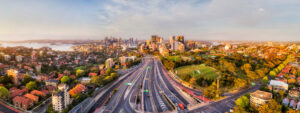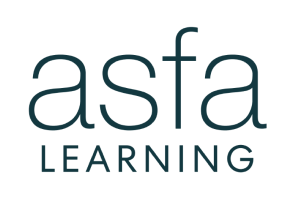To be fair, no one could ever have foreseen the devastation that would result from COVID-19. Fast forward just one month and the equities markets tumbled by a reported 36 per cent between 20 February and 23 March. Optimism was no longer the mood of the day.
Australian investors have a strong predilection for shares, particularly Australian shares, heightened by a consistently low interest rate environment this century. After a decade of mostly rising share prices and falling interest rates, many investors were increasingly over-confident that shares would continue to provide both capital appreciation and income via dividends.
Then the dividend tide turned
There has been a dividend boom over the last ten years but the tide has now turned. UBS calculated that Australian investors had enjoyed a dividend payout of $80 billion last year alone. Now Plato Investment Management is suggesting that investors will take a $26 billion hit this year as Australia’s largest companies axe or defer their dividend payments to investors.
This has come as a shock to many. “Unprecedented” is perhaps one of the most overtraded words of 2020, but it’s no surprise that so many retail shareholders and institutional investors assumed that dividends would continue to be paid by our most prosperous companies, even in turbulent times. Never before have we seen such widespread axing or deferral of dividends.
COVID-19 has challenged the prosperity of most companies and called into doubt the Australian share dividend gravy train. With the exception of toilet paper companies, some technology providers and suppliers of personal protective equipment, few companies have escaped COVID-19 without taking some kind of hit.
In early April, the Reserve Bank of New Zealand announced Australia’s big four banks’ operations in New Zealand should stop paying dividends back to their parent banks as a proactive move to protect the New Zealand economy from the crisis. Consequently, after APRA’s announcement with regards to capital requirements, Bank of Queensland was the first to announce that dividends would be deferred here in Australia.
Many of the major Australian corporates followed suit. Last month Westpac broke the news to its 610,000 retail shareholders it would suspend dividends for the first time in 37 years, and insurance giant IAG told its 650,000 shareholders a dividend payment is unlikely to be forthcoming.
This is leading to a recalibration of risk
SMSFs and retirees will undoubtedly be hurting as their retirement income is negatively impacted this year. The super fund sector is under pressure as a consequence of holding illiquid assets amid demand resulting from the early access super schemes.
Change is afoot
Part of this change will result in funds reducing their allocation to illiquid unlisted assets and we expect to see more money moving to risk-averse assets such as fixed income, particularly in the investment grade space.
We are also seeing more opportunities for super funds to take greater advantage of corporate bond investment. Changes to ‘repo’ or repurchasing arrangements means that investment grade bonds can be sold to the RBA on the understanding they are repurchased at a future time and at a pre-arranged price. With recent regulatory change to broaden the classification of repo eligibility, we are expecting to see more investment grade corporate bonds issued (Woolworths is one such example) as the regulator provides a lifeline to markets similar to during the GFC when it supported the residential mortgage-backed securities
The Government is also issuing record amounts of fixed income and this will create more opportunities for investors looking to reweight their fixed income allocation at the lower risk end of the spectrum. The recent Australian Government $19 billion 10-year bond issue at a yield of 1 per cent shows high levels of investor confidence in lending to the Australian Government for a long period of time at low rates.
A feeling of déjà vu
This recalibration of risk and transition to and within the fixed income sector is something we have witnessed before. In the three-year post GFC period there was a strategic shift to fixed income, according to recent research by SEM Benchmarking. Those top quartile funds that best weathered the storm started with a greater allocation to fixed income (37 per cent) and this was increased in the subsequent three years to 45 per cent. Those who were worst affected by the GFC had a smaller allocation to defensive assets but also increased their allocation from 28 per cent to 30 per cent in the same three-year period. And this was at a time when term deposits were paying 4 per cent. Today investors are struggling to find 2 per cent.
We expect to see a similar trend as a result of the global COVID-19 crisis as investors take advantage of fixed income as an alternative performing asset class in this time of volatility. We expect that the lure of coupon payments in the absence of dividends will also prove attractive as they provide certainty in what are very uncertain times.
In praise of fixed income
For super funds the expertise is already inhouse and they’ve been able to seamlessly reallocate capital across asset classes. Indeed, some of the larger super funds have seen their larger-than-average allocation to fixed income vindicated since the start of the crisis.
Smaller funds facing challenges accessing expertise
Some entities face challenges accessing expertise in fixed income. Often smaller funds do not have the scale required to warrant an individual mandate by larger outsourced asset managers who typically offer a managed trust. Such utilisation of specialist managers is serving smaller funds well as they are able to access expertise beyond their own internal capabilities.
It would seem that the writing is on the wall for the next couple of years at least and sustainable growth will be front of mind. Portfolio managers have a real challenge on their hands as individuals, businesses and governments learn to live with COVID-19. In an environment where much of the future feels uncertain, one thing we can expect is that the next two years will test the mettle of all investors, be that the largest super funds or the smallest SMSFs.







